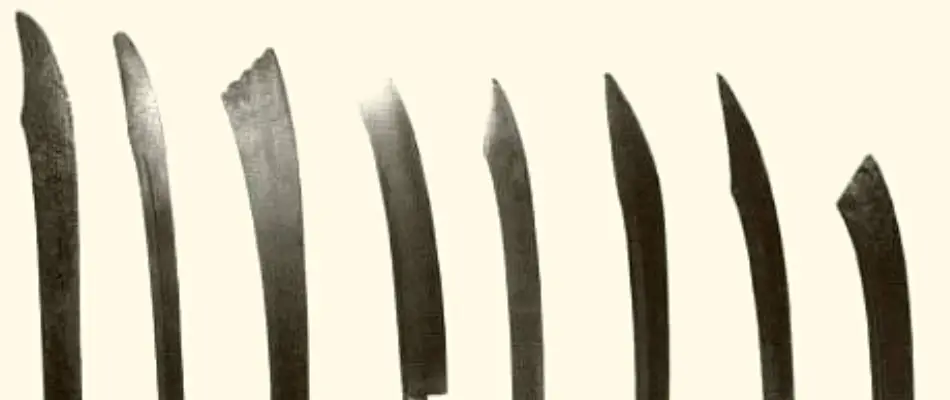There are many-many-many broadswords available in stores and online. Yet, there are just a few key things to know prior to picking one out for yourself. I am writing this article because there are a couple mistakes that I want you to avoid. The tai chi broad sword form is short and fun and I feel a lot of people don’t get started because of some initial confusion, overwhelm, or perceived expense.
The tai chi broad sword is one of the principle weapons of tai chi chuan characteristically having a wider blade towards the tip, handle guard, and flags attached to the pommel. There are three general types of broadswords used for practice: wooden, heavier steal, and a lighter spring steel. Broadsword length is determined by your height and broadsword type is chosen your goals for practice.
1. Get the Right Size Tai Chi Broad Sword
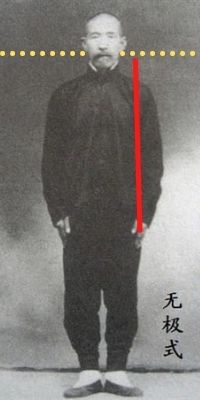
Measuring to get the right broadsword for you is easy. If you are holding a tai chi broad sword when the form begins, you are holding the handle upside down in your left hand. The blade lays on the front of the left arm, and the tip of the sword should come to the bottom of the ear. Some schools with shorter swords say to use the height of shoulder. Alternatively, the length of the sword should be from the middle of the throat along the length of the outstretched arm.
Why is length important? More than anything, if it is too long you will hit the tip on the ground. The broadsword uses lower stances and sweeping movements where the broadsword blade is parallel to the shin while stepping and perpendicular to the ground when spinning. So have someone measure you from your wrist to your ear before ordering.
2. Wooden Tai Chi Broadsword or Metal? Both
Here is the logic behind different camps:
Camp 1:
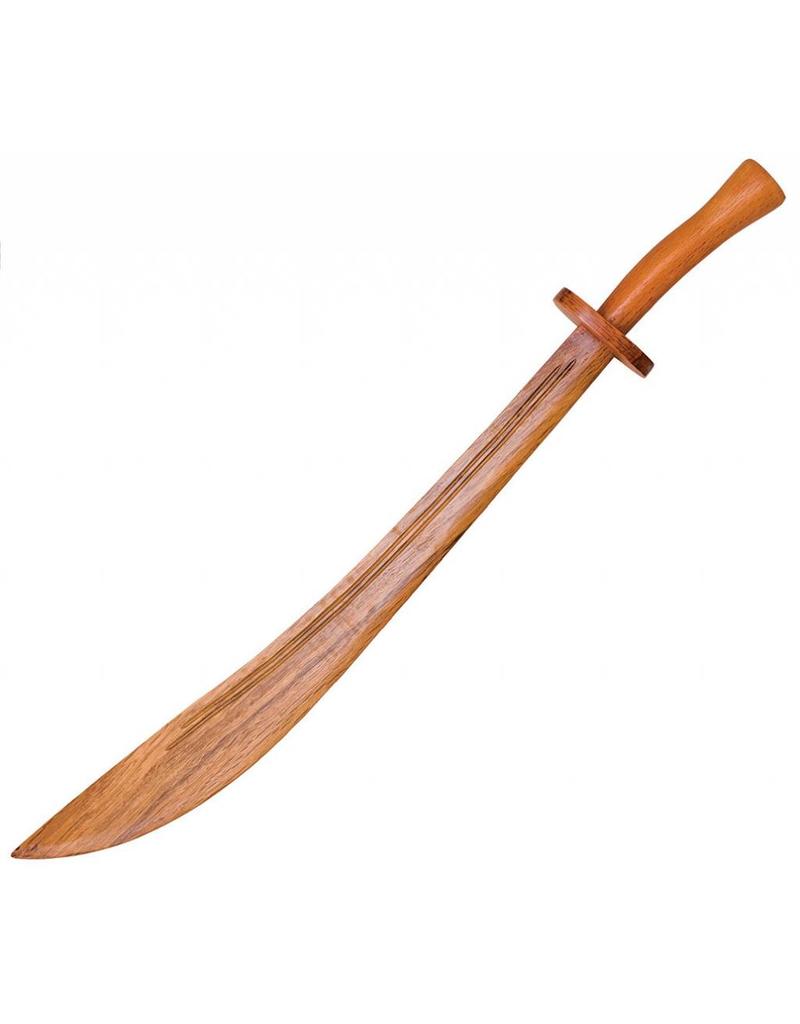
Don’t buy a wooden tai chi broadsword because eventually you will need a metal one so just buy the metal broadsword right away. Plus, a wooden broadsword doesn’t give you the proper feedback like a metal sword.
The problem with this approach: Most people don’t want to fork over the money on a proper broadsword when they just begin learning the form. This is totally understandable because they don’t know if they will like it and stick with it. So typically, they buy a mediocre (heavy!!!) metal broadsword for less money and then they still have to buy a better one down the road. Once we already have a broadsword, even if it is a bad one, we are reluctant to buy another one even if it gives us the feedback (shaking) to develop internal strength.
Camp 2:
Don’t buy a metal broad sword because you don’t know if you will continue and you don’t yet understand what a good sword is. You could get a hunk of metal shaped like a broadsword. Spend the $20-$30 on a wooden broadsword and upgrade later.
The problem with this approach is that many people don’t upgrade and never feel the nirvana-like quiver when you issue into a proper sword with proper fa-jing (internal explosive energy).
The Solution? – Both
Honestly, if you are just starting out, your whole focus is on choreography and getting the form down. Working your way through the levels of tai chi development can take a long time and starting out with a wooden sword is fine. Then, try out the swords from your teachers and classmates to find out what you like and what makes a good broadsword. Then, when you upgrade, you have a wooden practice sword that your friend/sister/buddy can borrow if they are interested so you have someone to practice with.
What Makes a Good Tai Chi Broad Sword?
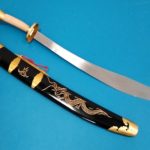
A good sword of any kind needs to respond. What this means is that if you are striking with the sword and your body is in correct alignment, the blade quivers in a very unique way. This does not happen with wooden broadswords. This does not happen with the cheaper, heavy broadswords. On the other end of the spectrum, the wushu broadswords that sound like tinfoil thunder are too thin and are meant for demonstration, not giving your body feedback.
A great tai chi broadsword is bendable enough that if you stand it on the point, it bends a bit but does fold in half. Wushu uses these floppy types, not us. The Renaissance Festival uses the heavy broadswords, not us.
Tai Chi Broadswords for Sale
I’m going to share some of the best affordable swords that meet our criteria. These are the ones that we have tried out at tai chi workshops and these are the ones that we use and suggest to our class. Then, for the real broadsword enthusiast we will cover some history in case you are looking for something special.
Tai Chi Practice Broadswords
Here are two great choices for tai chi practice broadswords. There is the traditional wooden sword and now they are making practice swords in very light plastic. If you have questions, I suggest you write to the seller and ask some questions. They are usually very enthusiastic martial artists and happy to answer your questions.
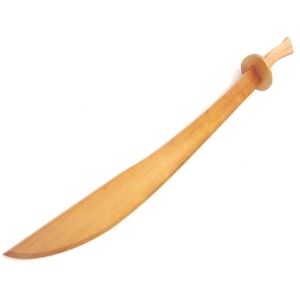
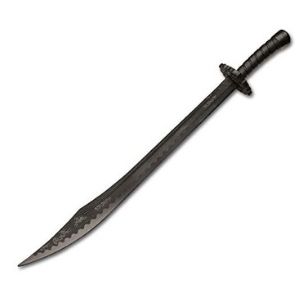
Tai Chi Metal and Competition Broadswords
If you want to jump right to a metal broadsword I can say that you probably won’t regret it. There are two problems you have probably already seen when searching for a good tai chi broadsword:
- The prices of tai chi broadswords vary incredibly! Some are selling for under $100. Some are selling for $500. The cost of these broadswords do not correspond with “better” in my opinion.
- They type of metal is also something you can’t really know much about by looking on them online. Again, it is VERY important that your blade is flexible so that it quivers when you are moving correctly.
If price is an issue for you. This is the best sword for the money and is really popular in tai chi classes. However, the metal in this sword is not that flexible:
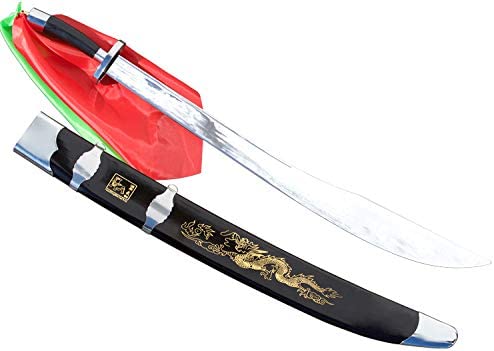
Our top pick?
For about $20 more you can get a superb, light, flexible broadsword that will not only help you develop the needed energy but this sword is also really fun to use:
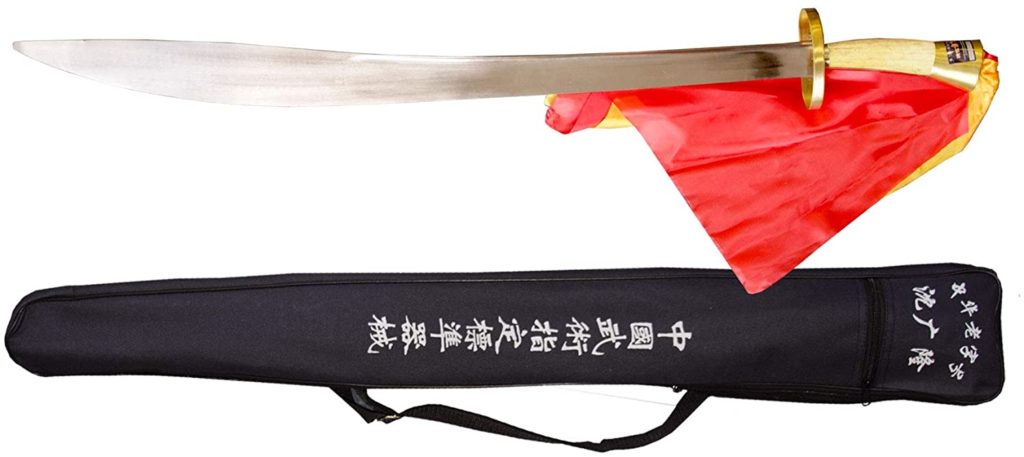
A Quick History on the Tai Chi Broad Sword
The dao a.k.a. tai chi broad sword arrived in China via the Mongol influence and stayed long after their reign. Over time, this led to many changes to the blade and the broadsword (dao) completely replaced the straight sword (jian) as a military weapon in China.
The Four Main Tai Chi Broad Swords
Yanmaodao Tai Chi Broad Sword
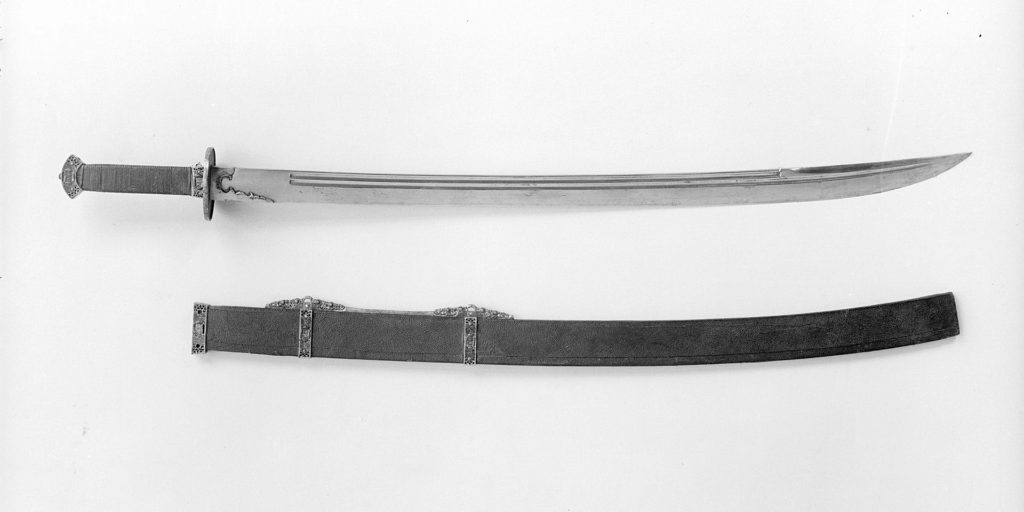
The yanmaodao or “goose-quill saber” is largely straight with a slight curve beginning towards the tip. It looks a bit like a straight sword with a bend because it doesn’t get fat at the end. However, it is still only sharp on one side and is used for slashing and hacking.
Piandao Tai Chi Broad Sword
The piandao or “slashing sabre” has a larger curve and looks like the most like a shamshir or scimitar. The difference being that a scimitar has two surfaces to the edge, basically more of angle on the blade towards the tip rather than one continuous straight blade edge. I have never seen a tai chi practitioner use a piandao and from the limited information out there it seems to be intentionally shorter and requires a shield. The fact that the blade doesn’t have a continuous edge also makes me think that it may not “quiver” and transmit feedback throughout the entire sword.
Niuweidao Tai Chi Broad Sword

The niuweidao or “oxtail sabre” has a very flared tip and is probably what you have seen in kung fu movies or in tai chi class. It is a fairly modern invention and was used by less-skilled swordsman that were probably trained more quickly for combat.
Liuyedao Tai Chi Broad Sword
The liuyedao or “willow leaf sabre” is the most common of the sabers. It has a moderate curve along the length of the blade. This weapon became standard for the cavalry and infantry and used by many martial arts.
Above all else, just start the tai chi broadsword! It is fun, short, and a great way to make your openhand form better. You can start by reading this essay to learn more about how to practice the form correctly and the benefits from learning it.


